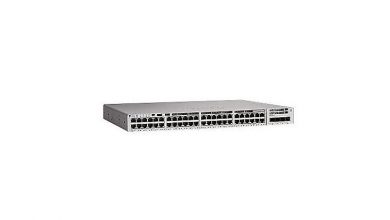What is an inverter?

In the many advices given to owners and tenants, the inverter is taking up more and more space. The problem? What is an inverter used for? The explanations are vague and the possible use is even more so. In fact, understanding how it works will make you want to equip yourself with an inverter.
How an inverter works
A UPS is mainly used to compensate for power outages, but that’s not all.
Initially, in the event of a power outage, the batteries of the inverter will supply energy to your devices for some time. The autonomy varies according to the capacity of the batteries and the power required. It takes over when there is a power outage, this allows you to have time for all your backups.
In a second step, we must consider its continuous contributions. The UPS is mainly used for computer systems. These devices require precise voltages (3.3V, 5V, 12V, etc.) which are supplied by the switching power supply of your PC. For the whole to remain as efficient as possible, it is necessary to have a stable input voltage and to suppress the parasites. The inverter fulfills this role to perfection. It will therefore also have a system protection function, in particular for electronic capacitors.
Useful on all equipment at risk, it takes on capital importance when the EDF network is not optimal, especially in remote areas.
Inside an inverter
The term inverter describes a function rather than an object in fact. In this device, there are several subsets, each with its own use. If you are wondering what an inverter is used for, you will find the most detailed answer here.
Here are the main components that make up an inverter:
- Rectifier: it transforms the alternating current into direct current which is intended to charge the batteries, as well as to supply the inverter. Thanks to it, the network voltage variations are suppressed.
- Batteries: they are there to store energy.
- Inverter: it transforms the DC voltage emitted by the rectifier or the batteries into an AC voltage, which is 230 Volts at 50 Hz.
- Contacts: Several contacts are available depending on the models. Some are used to monitor the device (battery status, presence of voltage), others are used to supply several circuits (lighting, PC, game console).
It embeds a small integrated software generally accessible by a web portal. With it, you can program the different outputs to optimize the use of your inverter and its autonomy.
Power supply in the event of an outage
As soon as your UPS detects a power outage, its batteries take over and power your equipment for a period that directly depends on their autonomy.
Depending on your settings, different circuits in your home will be power. You could have one or two lamps in strategic places, your computer, or even a wood stove (with a large set of batteries to cope with the lighting period which consumes around 500W on most models).
To have exemplary flexibility, you could place your inverter near your electrical panel and thus be able to supply any circuit. Please note that the connection requires good electrical knowledge at this time. It will be necessary to place a low voltage relay to switch your circuits from the general power supply to your inverter in the event of a cut.
Even if the network is reliable at your place and you are still wondering what use an inverter is for you, read the following part on the quality of the signal. Also try: APC Smart-UPS Solutions
The voltage quality of an inverter
The inverter is used to get a perfect sine wave. An electrical voltage can undergo several types of disturbances which are:
- Parasites
- Frequency variations
- power surges
- Voltage sags
- The cuts
- Brownouts
- Harmonics
The voltage emitted by the mains should normally have the form of a pure sinusoid, moreover, it must be perfectly stable. It includes harmonics, it is multiple frequencies of the base frequency and random signals which are. Called noises. Added to this are the micro-cuts, as well as the variations, they can be more or less than the nominal voltage. With all these electrical phenomena, they can cause you multiple problems, especially on sensitive electronic systems.
The UPS frees you from all that.
The different types of inverters
Even if now you know what an inverter is for, let’s see what the 3 types of inverters are:
Off-Line: The equipment is powered by the mains and the inverter takes over in the event of a cut. This is also the case for a drop in mains voltage which is, for him, too great. It switches to the batteries for a while, this should not cause any problems for your computers that have switching power supplies, but it turns out that it can cause problems for your equipment for the most sensitive ones. The advantage is that they are economical, but their use is. Reserved for workstations, or even for individual use.
Line Interactive: The principle is the same, except that the input voltage is. Controlled and filtered by the inverter before being sent to the equipment. The current provides better quality, but the disadvantage is that the voltage variations are. Not well regulated. Therefore, it is not advisable to use this type of UPS on the vital servers of a company.
On-Line Double Conversion: The current is permanently emitted by the inverter, it guarantees you a constant voltage and an absence of interference. The device will therefore be. Protected and totally disconnected from the mains. The On-Line UPS is the one with the most stable output voltage and better immunity to interference. They are the best choice for all mission-critical servers.
Which power to choose for your inverter?
The only important thing you need to know is that you are. Not given the maximum power in watts, but in Kilo Volt Amperes (KVA). Without going into excessive notions of electricity, without taking into account the efficiency. Or the phase shift, the result will be equivalent.
Remember that the output voltage is stable (220V) this value will tell you the available power and therefore the autonomy of your device. On the manufacturers’ documentation, you can find an indicative value of autonomy according to the power used.
Choose hardware that gives you the capabilities you expect. Some need a lot of power for a very short time, others will favor autonomy.
Now that you know what an inverter is. Used for, you can make your choice and equip yourself accordingly. You don’t need to remember everything except the method to choose your inverter.
The installation of an inverter can be done at the same time as the upgrading and replacement of your electrical panel, for all your questions, call Multilink Eng.
Read more:
Why do I need an uninterruptible power supply (UPS)?





